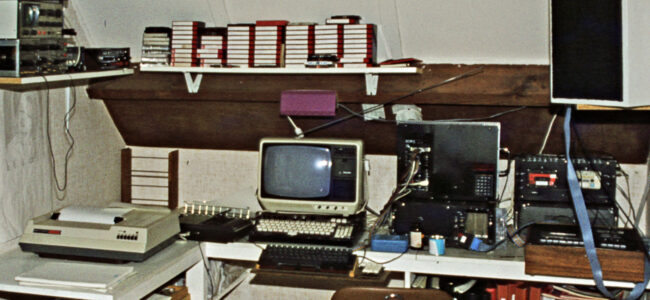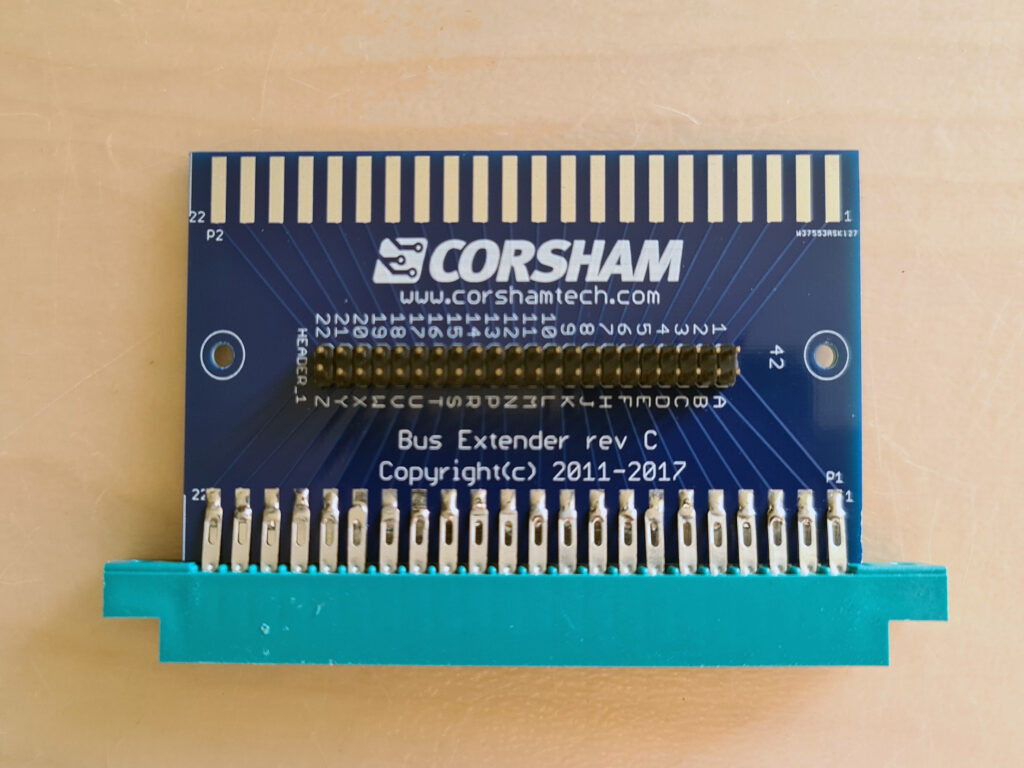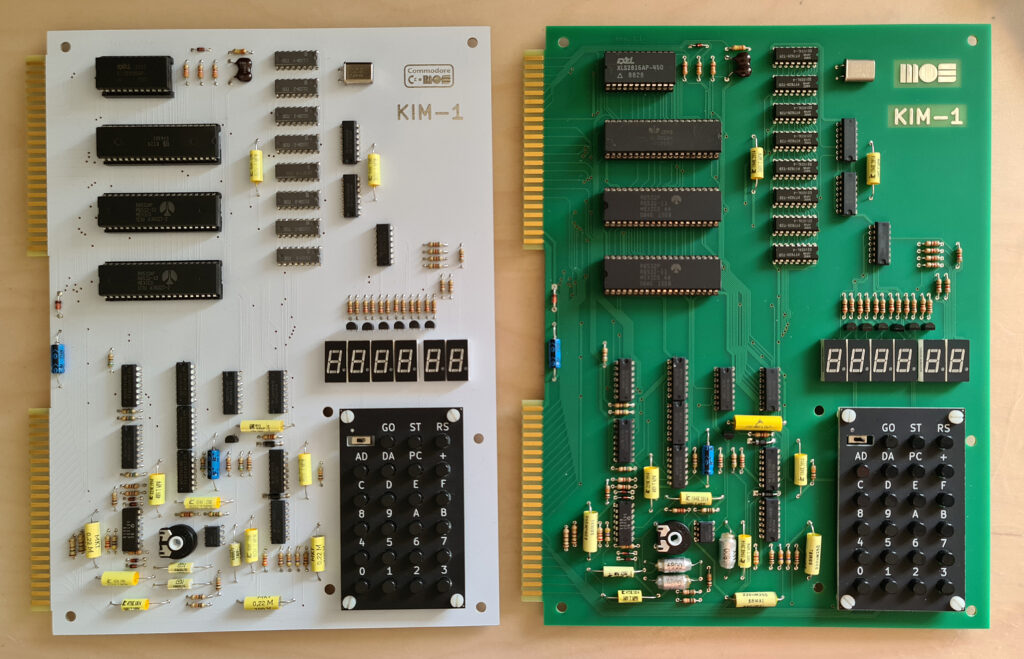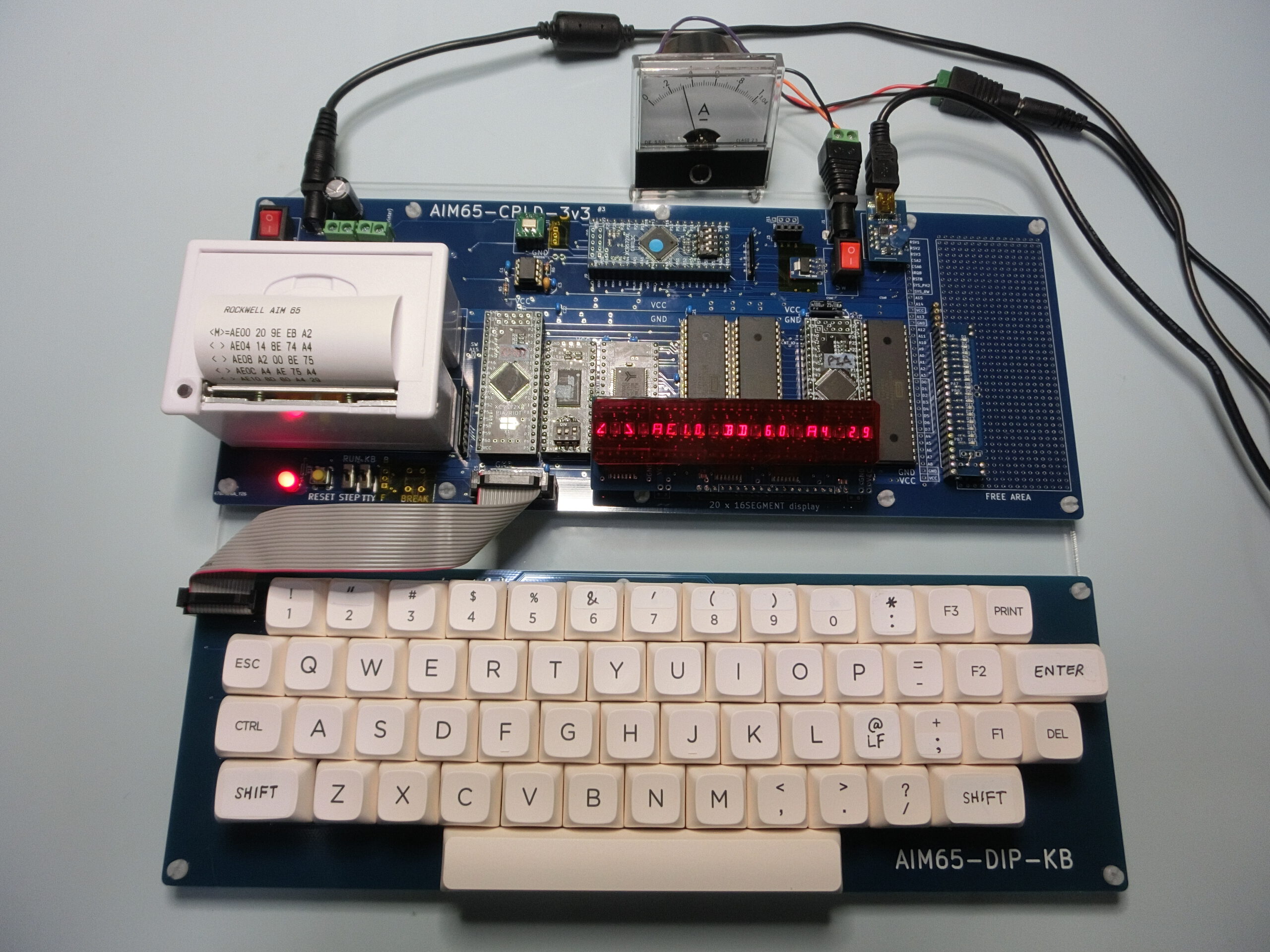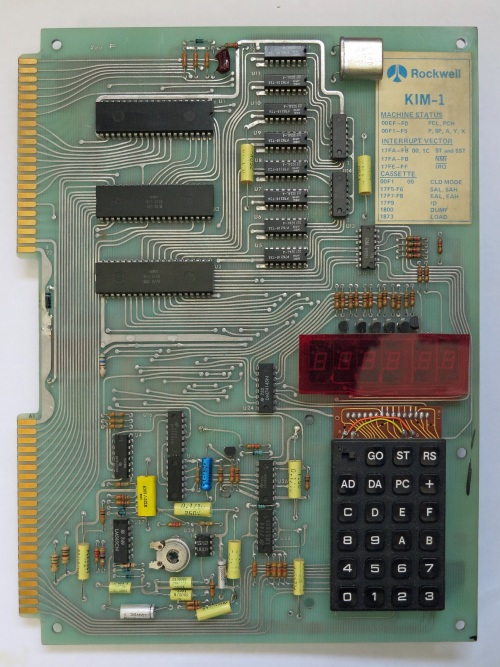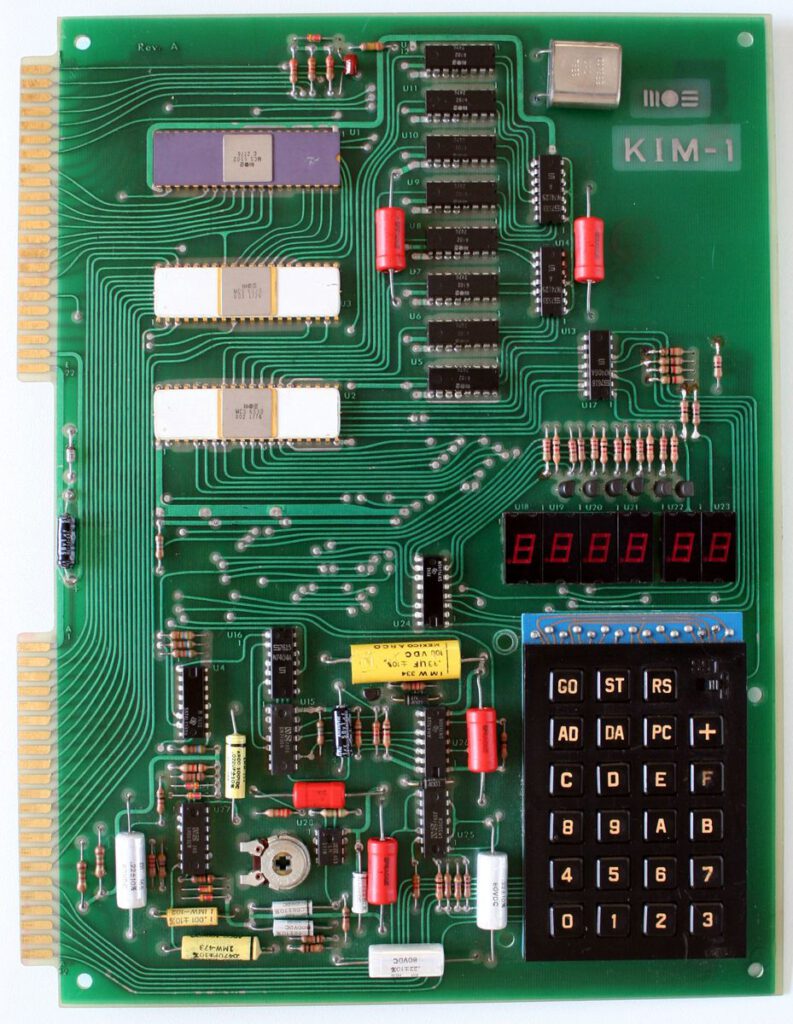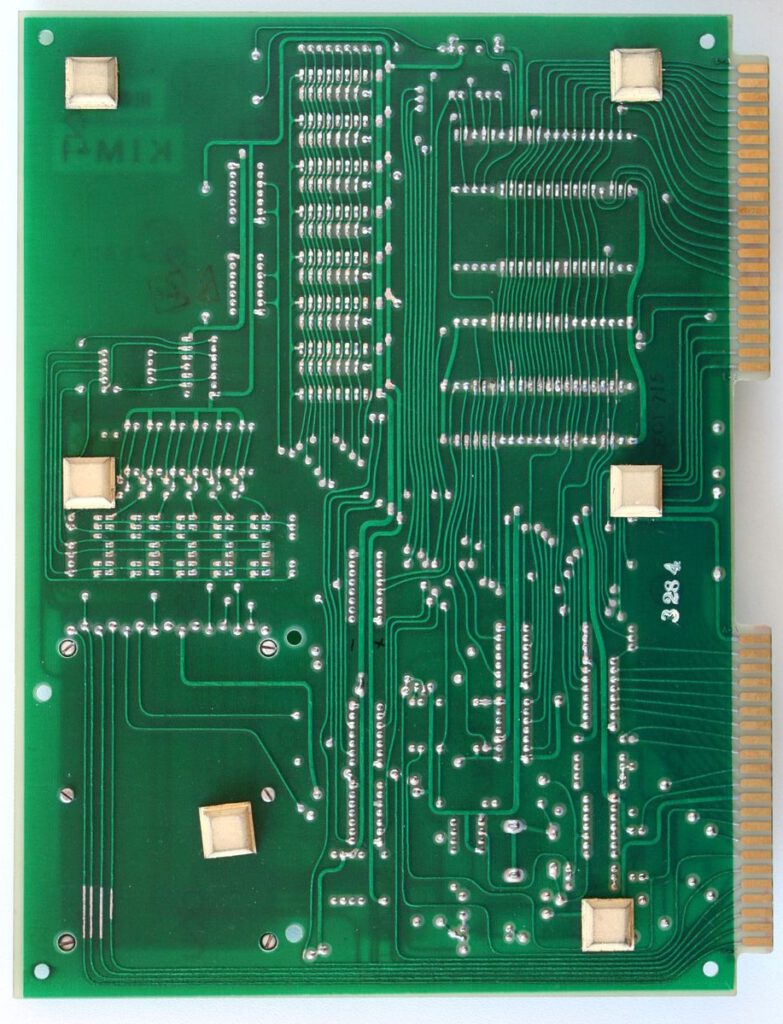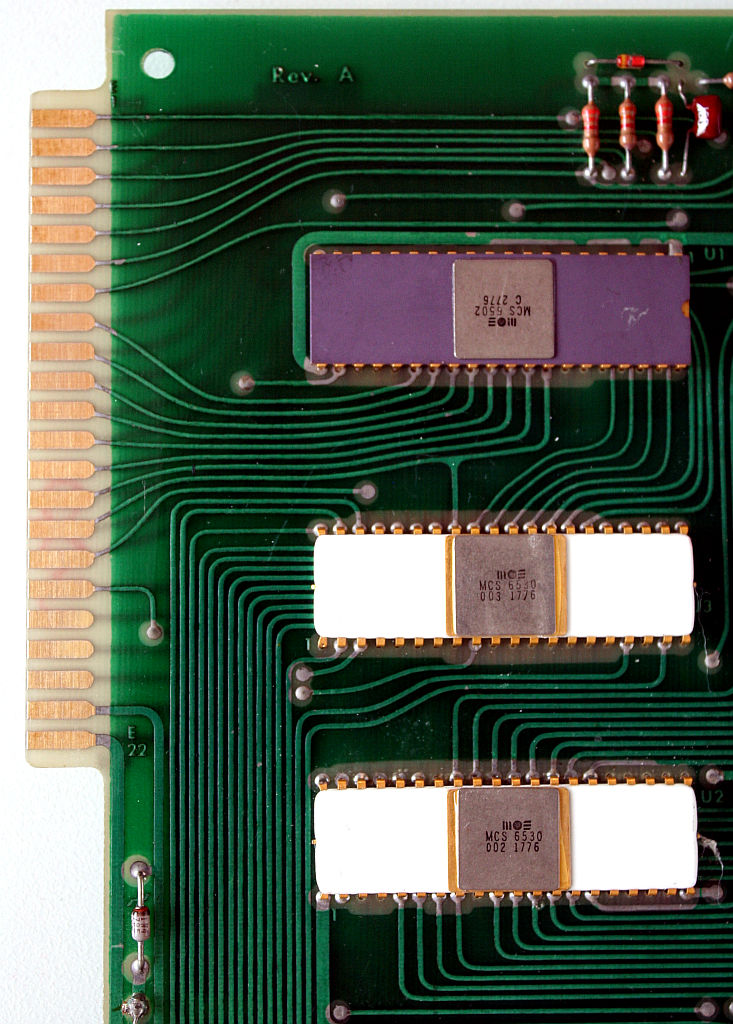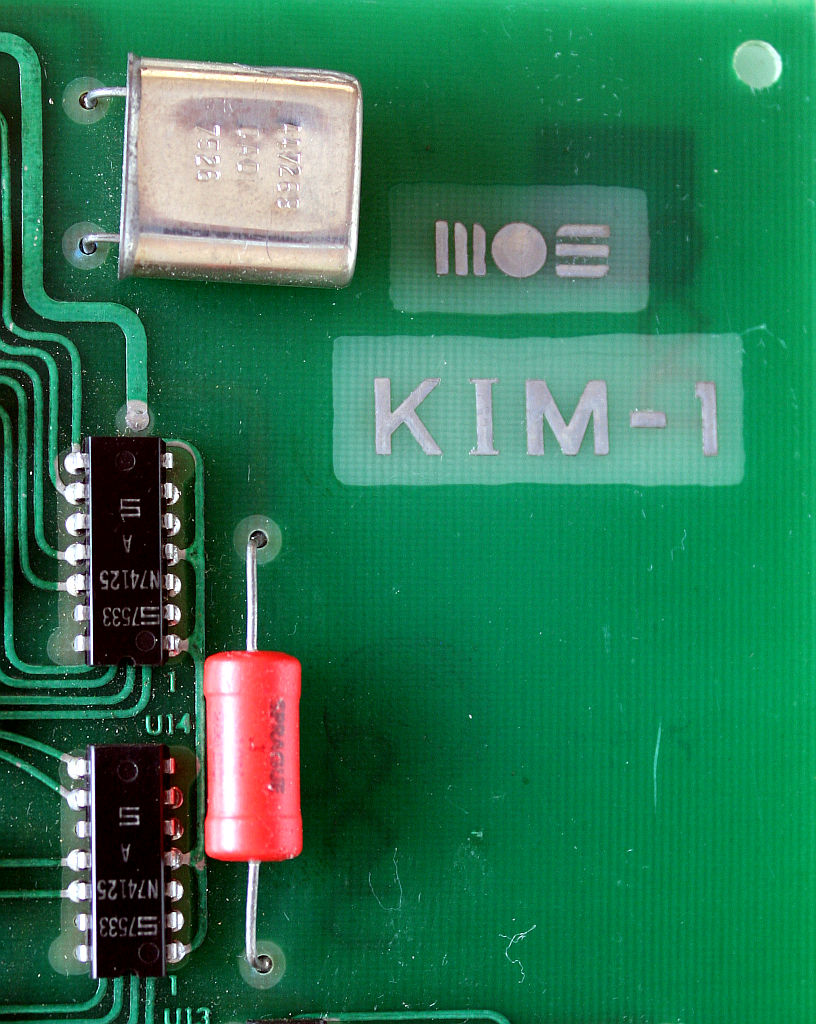In 1982 I wrote/composed a program to have disassembled code on paper, with page numbers.
The core routine of the disassembler is the well-known Steve Wozniak/Allen Baum 1976 article A 6502 Disassembler from Apple
The program is a TTY program. I build it with the then current hardware and software of my KIM-1:
- 32K RAM from $2000
- Video terminal uppercase 24×32 on the KIM TTY serial in/output
- A parallel ASCII keyboard connected to the second 6532 RIOT port
- A serial connected, at 9600 baud, Heathkit H14 matrix printer
- Dual audio cassette records under motor control
- MICRO ADE assembler/Editor, extended and with video TTY as output, parallel keyboard as input and could print at the H14 printer
Only the KIM-1 survived today this setup and is now on display above my desk in an acryl case. Most of the software is converted from tape and is on this site in the KIM Software page.
The program was written to have a disassembled printed listing of software like the Microsoft Basic KB9 and other binary only software, so I could analyze, make notes and patch it at will to my hardware and more. It was located at location $B000, out of the way of where most programs were loaded, like $0400 or $2000.
The program prompts for output to video or to video + printer. If printer is selected the output will be paginated with page numbers and it asks for a header text.
I still have the printed output of Microsoft Basic with my hand written notes on it.
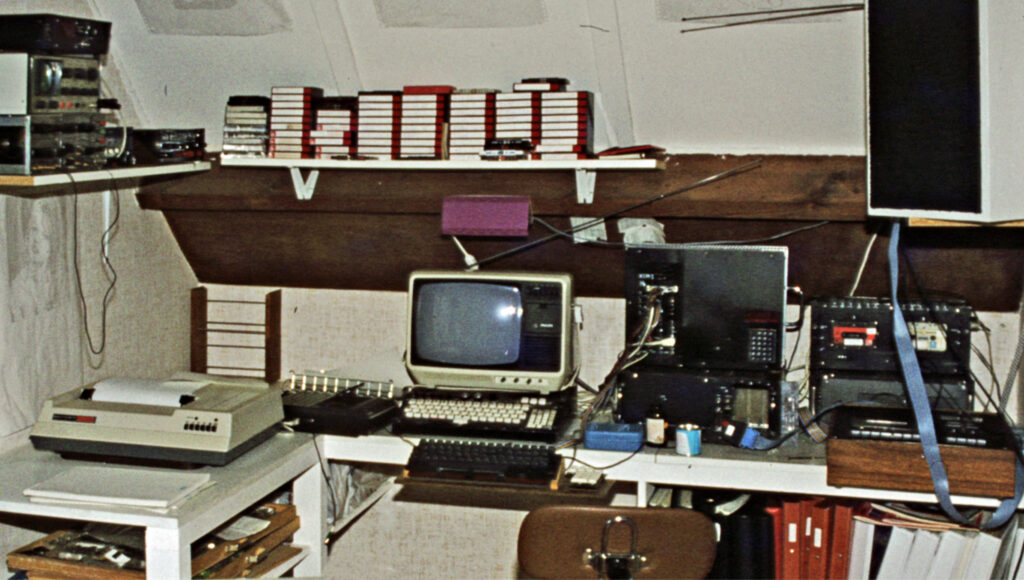
My workplace setup in 1982: KIM-1, dual cassette, tv monitor, H14 printer, ASCII keyboard
The original source and binary (restored from cassette, the previous version on the website was incomplete):
Printing disassembler, load and start address is $B000
Source of disassembler
Requires a parallel keyboard for character input at the free 6530 PIA port. H14 printer output if print is requested.
As is not fit for a standard KIM-1!
PRDIS Version 2
In January 2023 Glen Deas, K5GED, approached me about this program. He found out the binary was missing the last bytes (now corrected). He also showed me how he converted the MICRO ADE source to AS65 format and made it use the KIM-1 standard TTY I/O again.
Printing disassembler, load and start address is $B000 for KIM-1, Glen Deas version
; VERSION 1.1 JANUARY 2023 SYNTAX MODIFIED FOR THE
; A65 CROSS ASSEMBLER GLEN DEAS, K5GED USA
INVOKE A65: A65 -L -M -H D6502TTYV2.S
; Version 2.0 MODIFIED TO USE THE KIM-1 SERIAL I/O INSTEAD OF PARALLEL KEYBOARD
; USING KIM'S TTY ROUTINES - BY DEFAULT IT OUTPUTS TO THE VIDEO
; MONITOR/TTY VIA THE OUTCHK CALL TO THE KIM-1 MONITOR
; Set up Procomm up for 7 data, Mark parity, and 2 stop bits, no echo
PRDIS Version 3
I could not resist to spent an afternoon on the source Glen Deas has given me. So much fun to work on code 40 years later. Grateful to Glen for his work on his vesion.
Here is my latest version, running fine in the KIM-1 Simulator.
Source and binary in papertape format V3 of PRDIS
Improvements in V3:
- No problems with echo or 7 bit anymore, all standard KIM-1 monitor
- Lowercase messages
- Code for H14 printer or parallel keyboard commented out, reducing size
- Rommable, variables moved to RAM $0200, program at $B000
- Stops output after every 16 lines, any key but Enter stops program
- Source formatted and syntax for TASM32, license added
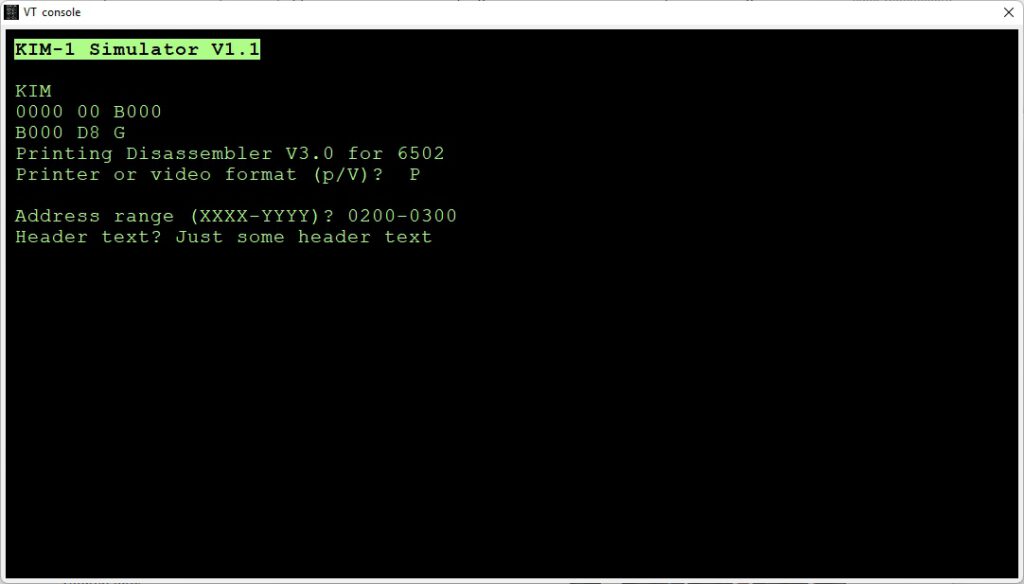
Example session, PRDIS disassembling itself without and with Pagination:
KIM
B000 D8 G
Printing Disassembler V3.0 for 6502
Printer or video format (p/V)?
Address range (XXXX-YYYY)? B000-B100
Disassembly:
B000 D8 CLD
B001 A2 FF LDX #$FF
B003 9A TXS
B004 A9 01 LDA #$01
B006 8D 00 02 STA $0200
B009 A9 00 LDA #$00
B00B 85 EE STA $EE
.
.
.
B0F6 C9 22 CMP #$22
B0F8 F0 13 BEQ $B10D
B0FA 29 07 AND #$07
B0FC 09 80 ORA #$80
B0FE 4A LSR
B0FF AA TAX
KIM
B000 D8 G
Printing Disassembler V3.0 for 6502
Printer or video format (p/V)? P
Address range (XXXX-YYYY)? B000-B200
Header text? PRINTING DISASSEMBLER
PRINTING DISASSEMBLER Page 01
B000 D8 CLD
B001 A2 FF LDX #$FF
B003 9A TXS
B004 A9 01 LDA #$01
B006 8D 00 02 STA $0200
B009 A9 00 LDA #$00
B00B 85 EE STA $EE
B00D 8D 01 02 STA $0201
B010 20 2A B3 JSR $B32A
B013 A2 B4 LDX #$B4
B015 A0 AC LDY #$AC
.
.
.
B1C6 60 RTS
B1C7 A5 F0 LDA $F0
B1C9 38 SEC
PRINTING DISASMBLER Page 05
B1CA A4 FB LDY $FB
B1CC AA TAX
B1CD 10 01 BPL $B1D0
B1CF 88 DEY
.
.
.
B1F9 33 ???
B1FA D0 8C BNE $B188
B1FC 44 ???
B1FD 00 BRK
B1FE 11 22 ORA ($22),Y
KIM
B000 D8


